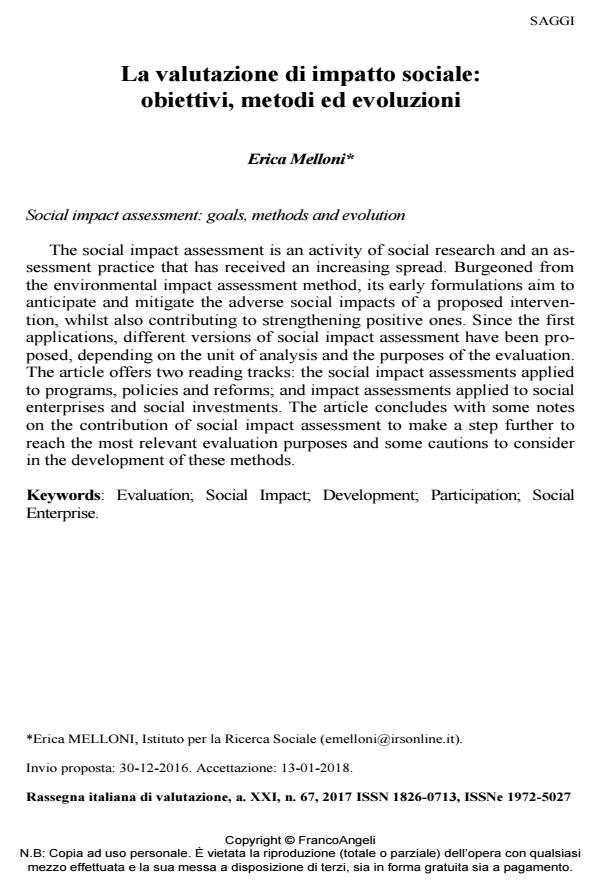Social impact assessment: goals, methods and evolution
Journal title RIV Rassegna Italiana di Valutazione
Author/s Erica Melloni
Publishing Year 2018 Issue 2017/67
Language Italian Pages 23 P. 101-123 File size 550 KB
DOI 10.3280/RIV2017-067007
DOI is like a bar code for intellectual property: to have more infomation
click here
Below, you can see the article first page
If you want to buy this article in PDF format, you can do it, following the instructions to buy download credits

FrancoAngeli is member of Publishers International Linking Association, Inc (PILA), a not-for-profit association which run the CrossRef service enabling links to and from online scholarly content.
The social impact assessment is an activity of social research and an assessment practice that has received an increasing spread. Burgeoned from the environmental impact assessment method, its early formulations aim to anticipate and mitigate the adverse social impacts of a proposed intervention, whilst also contributing to strengthening positive ones. Since the first applications, different versions of social impact assessment have been proposed, depending on the unit of analysis and the purposes of the evaluation. The article offers two reading tracks: the social impact assessments applied to programs, policies and reforms; and impact assessments applied to social enterprises and social investments. The article concludes with some notes on the contribution of social impact assessment to make a step further to reach the most relevant evaluation purposes and some cautions to consider in the development of these methods.
Keywords: Evaluation; Social Impact; Development; Participation; Social Enterprise
- La valutazione di impatto nel contesto socio-educativo: un ibrido tra evaluation, assessment e measurement? Enrico Orizio, katia Montalbetti, in RIV Rassegna Italiana di Valutazione 77/2022 pp.33
DOI: 10.3280/RIV2020-077003
Erica Melloni, La valutazione di impatto sociale: obiettivi, metodi ed evoluzioni in "RIV Rassegna Italiana di Valutazione" 67/2017, pp 101-123, DOI: 10.3280/RIV2017-067007